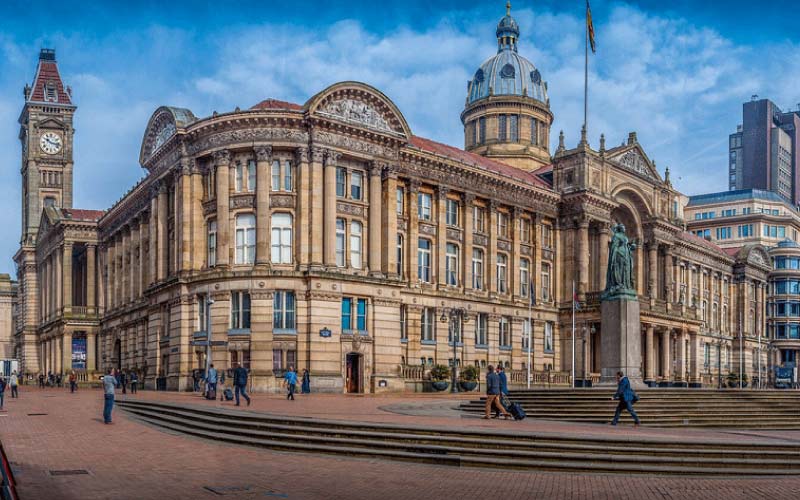Birmingham, a city known for its pivotal role in the Industrial Revolution, is a treasure trove of history. From Victorian-era architecture to canals that powered industry, Birmingham’s rich heritage is waiting to be explored. Whether you’re a history buff or simply looking to soak in the cultural landmarks, a day trip through this vibrant city offers the perfect blend of the past and present. Let’s take a journey through Birmingham’s fascinating historical highlights, all within a single day.
Morning: Immersing Yourself in Birmingham’s Art and History
Start your day at the Birmingham Museum and Art Gallery (BMAG), home to an extensive collection of Pre-Raphaelite art and fascinating artifacts from the Industrial Revolution. The museum is a true window into Birmingham’s historical and cultural evolution. One of the key highlights is the Staffordshire Hoard, the largest collection of Anglo-Saxon gold ever discovered, offering a glimpse into the region’s ancient past. Art enthusiasts will also revel in the fine art galleries, while the museum’s industrial exhibits give a vivid picture of Birmingham’s role as a manufacturing powerhouse.
Just a short walk from the museum, you’ll find yourself in Victoria Square, surrounded by grand architecture that echoes Birmingham’s Victorian roots. As you stroll through, you’ll notice the grand Town Hall, a masterpiece of Roman Revival architecture, and the stunning Council House, both symbols of Birmingham’s growth as a city. Take a moment to appreciate the sculptures, including the iconic statue of Queen Victoria, that adds a historical aura to the square.
Midday: Exploring Birmingham’s Industrial Heart
Next, head over to the Jewellery Quarter, one of Birmingham’s most historically significant districts. With over 250 years of heritage in jewelry making, this area was once the hub of global jewelry production. Begin your exploration at the Museum of the Jewellery Quarter, a preserved workshop that gives a glimpse into the life of 19th-century jewelers. The museum offers guided tours that are packed with interesting anecdotes about the craftsmanship and industry that helped shape Birmingham into an industrial leader.
While in the Jewellery Quarter, you can stop by St. Paul’s Square, home to the serene Cathedral of St. Paul’s, an 18th-century gem nestled amid the bustling city. Take a break at one of the nearby cafes or traditional pubs for lunch, and experience Birmingham’s vibrant food scene while enjoying a piece of its history.
After lunch, it’s time for a Canal Walk, which will transport you back to the height of Birmingham’s industrial heyday. The city’s intricate canal system was vital in transporting raw materials and goods during the Industrial Revolution. As you walk along the Gas Street Basin, you’ll discover beautifully restored canal boats and warehouses that once formed the backbone of Birmingham’s economy. For an added touch of adventure, consider hopping on a canal boat tour to see the city from a new perspective—much like the traders did centuries ago.
Afternoon: Birmingham’s Social History and Cultural Landmarks
For a deeper dive into Birmingham’s social history, visit the Birmingham Back to Backs, a set of carefully restored 19th-century working-class homes. These ‘back-to-back’ houses were common during the Industrial Revolution and provide a unique insight into the lives of Birmingham’s working class. Through guided tours, you’ll hear personal stories of the people who once called these houses home, offering a touching connection to Birmingham’s past.
Next, pay a visit to the Library of Birmingham, a stunning modern landmark that seamlessly connects the city’s past with its future. Though contemporary in design, the library’s Shakespeare Memorial Room holds historical significance as one of the finest tributes to the Bard’s work. Be sure to make your way to the rooftop garden, where you can enjoy breathtaking views of the city, offering a chance to reflect on how far Birmingham has come over the centuries.
Evening: A Glimpse into Birmingham’s Spiritual and Cultural Heritage
As your day winds down, take a quiet moment to visit St. Philip’s Cathedral, one of the smallest yet most charming cathedrals in the UK. Built in the early 18th century, this Baroque cathedral is known for its beautiful stained glass windows designed by Edward Burne-Jones, a renowned artist from Birmingham. The cathedral’s tranquil setting offers a peaceful break from the bustle of the city and a chance to admire its architectural splendour.
To wrap up your historical day trip, head to The Old Crown, Birmingham’s oldest surviving building, dating back to 1368. Now a traditional pub, The Old Crown serves as the perfect spot to unwind after a day of exploring. Enjoy a hearty British meal and a pint of locally brewed ale while surrounded by centuries of history. The pub’s timbered exterior and cozy interior evoke the feeling of stepping back in time, making it the ideal ending to your Birmingham adventure.
Conclusion: A City of History and Heart
Birmingham’s rich historical landscape, from its Victorian squares to its industrial canals and working-class homes, tells the story of a city that helped shape modern Britain. A day trip through its streets reveals a unique blend of the past and present, with each landmark offering its own chapter in Birmingham’s fascinating history. Whether you’re intrigued by its industrial legacy, its art and architecture, or its social evolution, Birmingham promises a journey through time that’s as captivating as it is educational.
So, why wait? Plan your visit to Birmingham and immerse yourself in the city’s rich history. You’ll leave with not just memories, but a newfound appreciation for the role this city played in shaping the world.






